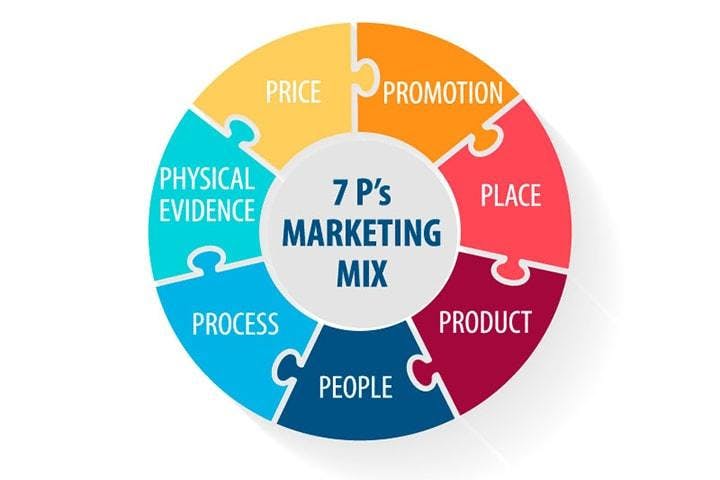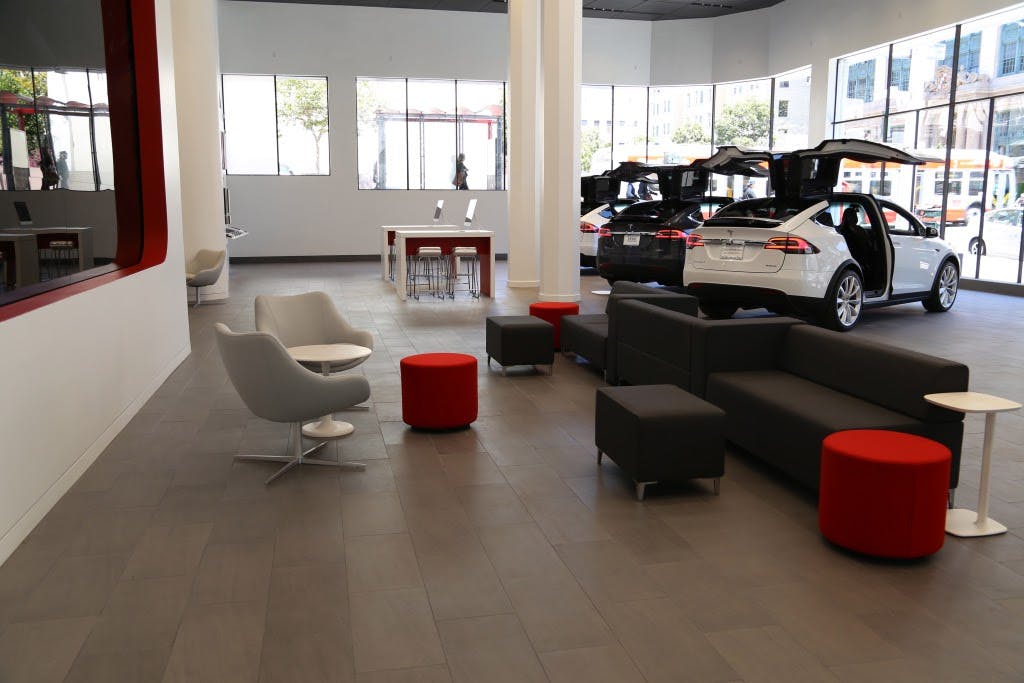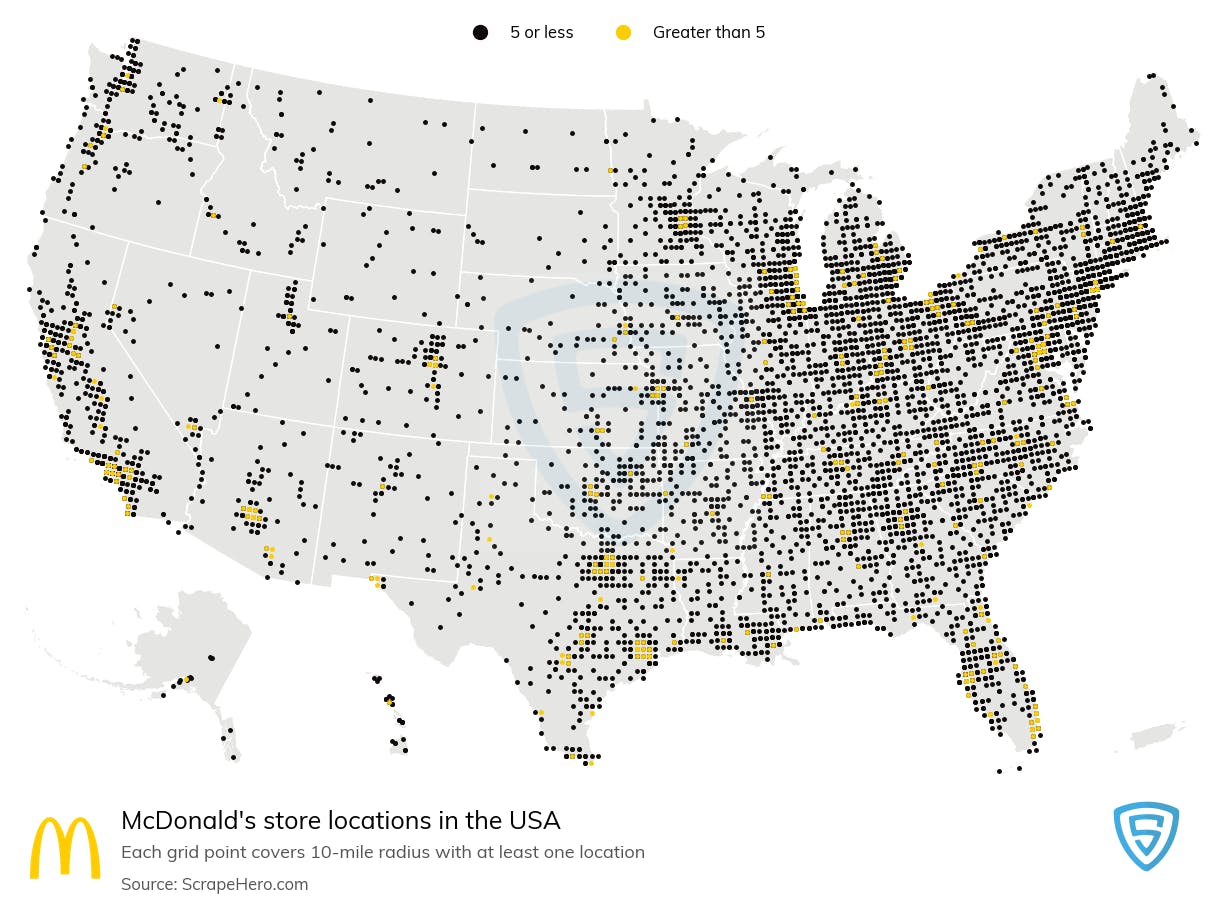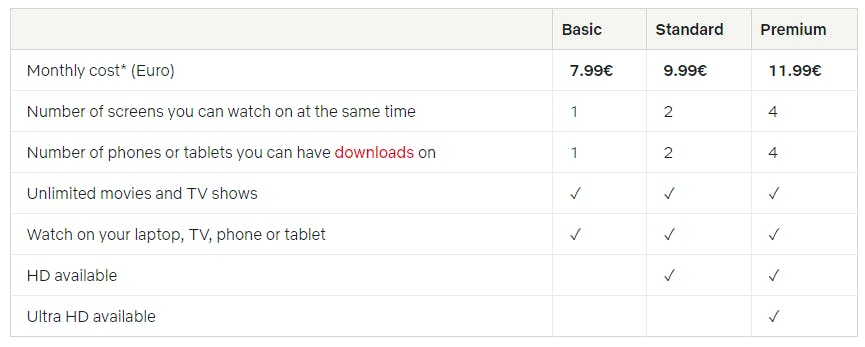Marketing mix: definition, 4ps and 7ps, elements and examples
Sep 22nd, 2021

Contents
What is a marketing mix?
Elements of the marketing mix: 4ps and 7ps
Marketing mix examples
How to define your marketing mix?
To the untrained eye, the marketing of unrelated companies, such as Ikea, Dyson, and Expedia, bears no resemblance. What could be similar between a furniture retailer, a vacuum-cleaner manufacturer, and an online travel agency? When you look closely, however, you will notice that all of them have a strong market presence, and their marketing can be broken down into a list of specific activities. We will review these building blocks in detail.
The way these companies approach their cooperation with customers is based on what’s called a marketing mix which is a fundamental tool for any business. The marketing mix will help you achieve the company’s objectives and satisfy your customers.
What is a marketing mix?
Marketing mix is a set of critical elements used by a brand to build the company’s market presence. Although the Ps are interdependent, the marketing specialists can consider each component separately according to the industry and marketing strategy’s goal and then combine them to deliver the best value to the customers.
Initially, the marketing mix consisted of four groups of variables which are product, price, place, and promotion. E.Jerome McCarthy introduced the model in 1960. In 1981, Booms and Bitner added three extra elements, including process, people, and physical evidence, that were more applicable for services marketing.
A marketing mix can help you determine how to bring a new product to the market or test your current marketing strategy. With the help of the model, businesses can develop advantages, minimize drawbacks, improve competitiveness and adaptability and increase collaboration between departments and partners.
Elements of the marketing mix: 4ps and 7ps
The four Ps are the fundamental pillars of any marketing plan. Companies utilize the marketing mix to learn about the customers’ requirements, the ways their business satisfies these needs, and how they differentiate themselves from the competition.

Product
A product in the marketing mix is a physical good or service offered to the customers. It should satisfy the customers’ demand or be so attractive that buyers believe they need it. This will result in new demand. Even the best effort put in the other marketing mix components would be useless if the product does not achieve a minimum performance level. And vice versa, a product, which is better than the competition, will significantly improve your ability to sell it, as customers would be willing to buy from you rather than from competitors.
To promote the product or service on the market, it is essential to determine the unique features that distinguish it from the competing offers. Moreover, it is necessary to decide what additional items may be sold in conjunction with it. The next step is to consider the life cycle and develop a plan for dealing with the product at every stage. This is needed to anticipate the challenges the customers may face once they buy a product and find solutions to their problems.
The questions the company can ask to improve the product are the following:
- Does the product satisfy the customers’ needs?
- What makes it different from the competitors on the market?
- What makes it unique?
- How would your customers benefit from using the product?
- How would it make their lives better?
- How are you going to promote the product on the market?
Price
The price of the product is the amount of money paid by the customers. Marketing specialists should compare the real and perceived value taking into account special discounts, competitors’ prices, and manufacturing costs.
The price can influence the product’s image. A lower price makes a product more accessible to a wider range of clients, whereas a higher price attracts those who demand exclusivity. There are various types of pricing strategies that usually depend on the business plan. For example, according to the broad cost leadership strategy, the company can minimize production, research and development, and material expenses. This would result in charging the prices below the industry average and offering products of decent quality. Hence, your company can achieve higher revenue due to an increase in the volume of sales.
When setting the price for the product, give the answers to the questions:
- What is the lowest price at which you would offer the product?
- What is the highest price at which the customers can afford to buy your product?
- How price-sensitive are the consumers?
- What are the current market leaders' prices in your niche?
- Is there a defined approach to pricing for this type of goods or service?
- What is the difference between your price and the prices charged by competitors?
- What kinds of discounts should you provide to business customers or other specific market segments?
Place
Place refers to the location where the customers can find, use or buy the product and the means for delivering it to consumers. When the business makes marketing decisions about the place, the company considers the best locations for sale and the ways to deliver the product to the market. The marketing decisions regarding the place also address logistics, transportation, online and offline inquiries, and locations of sales points.
The primary business objective is to make the product accessible for the customers and promote it to the people motivated to purchase it. This can relate to offering the product in some physical stores or placing it online, on TV shows, or in movies to attract attention.
The questions to take into consideration before choosing the location for selling your product are the following:
- Where do potential customers go to find your goods or services?
- Which online and offline stores sell your product?
- What can you learn from your competitors about the physical presence and distribution of their goods or services?
- Do you sell directly to your customers, or do you have to go via intermediaries?
- What are the best ways to find suitable distribution channels?
Promotion
Promotion includes a range of different activities to make the customer aware of the product or service, such as advertising, public relations, interviews, word of mouth, personal selling, and others. Whether you’re selling B2B or B2C products, the purpose of promotion is to demonstrate the value of the product to potential customers and justify the reasons they need to pay a certain price.
When making the marketing decisions about the promotion, the business needs to consider the budget allocated for the overall marketing mix. The marketers develop a message using information from the other three Ps to reach the target audience. It is also critical to determine the frequency of communication and the best channels to deliver the message.
Here are some questions the company should answer to develop effective communication:
- What channels does your target audience prefer to get information from?
- What kind of messaging works best when promoting your products?
- When is the best time to advertise your product?
- Is the market sensitive to seasonality?
- How do your competitors promote their products?
In addition to the traditional four Ps, there are three other components, including people, process, and physical evidence.
People
People refer to the customers and employees who have a direct connection to your product or service. This component concerns how professionally staff executes the duties, how the employees are perceived by the clients, and how satisfied customers are with their interaction with your team.
It is crucial that everyone who represents your organization and interacts with the customers be an expert with a thorough understanding of your product and how it can solve clients’ problems and improve their lives. So, besides studying your target market to understand the demand for your product, you need to employ the perfect candidates who can do their best to sell it.
The following questions will help you to hire the best team:
- What are the necessary skills for the marketing specialists to implement your strategy?
- What are the features of your brand personality?
- What values, goals, and attitudes does your company culture include?
- How can you increase customer loyalty and create genuine connections?
Process
Processes are vital for delivering high-quality services to your customers. You need to plan your processes in detail to increase your business performance and efficiency. Make sure that your operations are seamless and smooth to reduce unnecessary expenses and improve customer satisfaction. The processes can include features that are consistent with your brand, such as the focus on environmental protection.
The process maps will help you analyze the steps and understand whether the process needs improvements. For example, if you receive multiple client complaints about the same procedure, find what is going wrong and how to solve the problem. Consider the processes related to customer service, logistics, and digital partnerships as these points are crucial for online businesses.
You can improve the processes by answering the questions:
- Is your primary distribution channels’ logistics cost-effective?
- What is the state of your delivery and scheduling?
- Do you have enough employees to cover peak periods?
- Is it safe to order from your website?
- Will your third-party vendors run out of supplies at critical moments?
- Do you receive recurring complaints from your customers at specific points of interaction?
Physical evidence
Physical evidence refers to the packaging, branding, shop interior, and other things the customers see when they consume or buy your product or service. If you are selling the product online, physical evidence concerns the visual aspects of your website or social media.
The appealing design makes it easier for customers to recognize your brand and draw attention to certain qualities of your product. Besides, the packaging can contribute to customer education and brand promotion by including the instructions for using the product and a surprising element.
To build compelling physical evidence, consider the questions:
- Do your packaging, branding, and interior design convey your brand personality?
- What kind of impression the physical environment where you provide the product or service makes on your customers?
- Does the physical environment satisfy customer expectations?
- Does your website design reflect the image of your business?
- Is your website easy to navigate?
Marketing mix examples
We will analyze the extended marketing mix of the world’s leading companies to discover their formulas for success.
Apple marketing mix
Apple's marketing is so good that it can turn its customers into loyal supporters who will wait in line for hours to receive each new product the company introduces.
- Product. The company is best known for iPhone, iPod, and Macbook with a large selection of additional accessories. Apple’s guiding principles include creativity and innovation, so the company creates easy-to-use and stylish products and constantly improves them. The product design is kept secret, and the customers usually expect fresh and exciting solutions.
- Price. The company established its image as a premium and luxury brand, so the prices are above average. As Apple invests in R&D and owns the software used in the products, the expenses for production constitute a major part of the budget. The company charges a high initial price for the products and lowers it overtime to reach the price-sensitive segment of the target audience.
- Place. To maintain control over distribution, the company keeps strict standards for the shops allowed to sell their products. Apple distributes the products at Apple Stores, official websites, and via third parties such as authorized and telecommunication sellers.
- Promotion. Apple avoids information overload, extensive product feature lists, and distracting effects. The company emphasizes the unique value proposition and rarely shows the price of the products.

- People. Apple seeks people with enthusiasm and idealism and employees who want to do the impossible until they discover a way. The company’s customer service applies the A-P-P-L-E formula:
Approach with a personal greeting;
Probe gently about the customer's wants;
Present the solution the client can use right away;
Listen to concerns and issues;
End with a warm goodbye and an invitation to come back. - Process. The company makes the purchasing process very easy due to the simple navigation on their website and friendly customer support team.
- Physical evidence. Apple stores are welcoming and minimalistic to provide a personalized experience. The packaging is visually appealing and creates an impression of the premium brand.
Tesla marketing mix
Tesla produces high-performance electric vehicles and power storage systems. The company is famous for its emphasis on sustainability. Tesla's automobiles, engineering expertise, and focus on the transition to a sustainable transportation system set it apart from the competitors.
- Product. The company sells top-quality and highly differentiated products with practical design under five categories serving as product lines. This allows customers to choose the most appropriate products with unique features.
- Price. Tesla sells products at a higher price than its competitors. Thus, the price compensates for a larger number of features. The company also invests in R&D to improve the efficiency, safety, and convenience of automobiles and other products.
- Promotion. Tesla uses the website, social media, and strategic locations of its stores to promote the products. In addition, due to the sustainability of the products, the brand gets considerable media coverage. The network of Supercharger stations creates an additional presence for the company and serves as a competitive advantage, as no other electric vehicle company has anything similar.
- Place. Tesla's automobiles are marketed and sold directly to customers through its global network of stores and galleries owned by the company. The vehicles are presented at limited markets due to the premium pricing and unique concept that is not suitable for everyone.
- People. Direct sales create a better customer experience. The consumers communicate only with the sales team and customer service representatives. The company collects customer feedback at the stores, social media pages, and helpline to improve the services.
- Process. To ensure that the items are constantly available in retail locations, Tesla has installed systems that alert retailers when inventory levels are low.
- Physical evidence. In the stores, the company strives to create “the feel of an Apple store, a Starbucks, and a good restaurant”, which is a tremendous competitive advantage. Tesla offers the customers to spend time in a comfortable lounge, have a coffee and a snack. There is also an opportunity to make a free international call or consult the technician assigned to a certain car. In contrast, the other automobile companies often have no place to sit unless the clients are ready to sign the contract.

McDonald’s marketing mix
McDonald’s is one of the world-leading restaurants in the fast-food industry. The company’s marketing mix allows the brand to reach out to target customers all over the world and maintain the top position.
- Product. The company has created a menu for customers with specific preferences and of different ages, such as a vegetarian menu and Happy Meal. The diversity of product lines, including burgers, salads, chicken and fish, snacks, beverages, and desserts, attracts various customer groups.
- Price. McDonald’s pricing strategy is aimed at increasing sales volume and profit margins. The company uses a combination of bundle pricing strategy and psychological pricing strategy. McDonald’s offers product bundles for lower prices compared to buying each product separately. According to the psychological approach, the prices are perceived by the consumers as more affordable.
- Place. The company builds restaurants in neighborhoods, airports, malls, tollways, and colleges to provide convenience to the customers. McDonald’s states that consumers can find the restaurant practically everywhere they go. The company also provides an online delivery service via website and mobile app, which has increased sales and profit margins.

- Promotion. The company uses various tactics for product promotion, including advertising, public relations, direct marketing, and sales promotions. The most frequently used tactic is advertising on TV, newspapers, magazines, and the Internet.
- People. Every year the company spends £43 million on employee training and development in the United Kingdom only. The major company’s goal is to address problems that impact both customers and employees. If employees are unhappy, they will provide lousy customer service.
- Process. The food preparation process is transparent and entirely visible to customers. The company also optimized the processes related to placing orders and waiting for them.
- Physical evidence. McDonald's interiors are appealing, and the restaurants are usually kept clean. The packaging design is simple, stylish, and convenient.
Netflix marketing mix
Netflix is one of the world’s top streaming services. It offers various content, such as TV shows, documentaries, and movies. The massive advantage of the service is the absence of commercials.
- Product. Netflix offers three categories of content: the movies and documentaries that were previously shown on other platforms, the content demonstrated for the first time but created by other companies, and original content created by Netflix.
Every week the service adds new content to satisfy consumer demands. - Price. The platform provides three subscription plans, including basic, standard, and premium, to target different customer groups.

- Place. One of the most significant service advantages is availability. The customers can watch movies from various devices from anywhere in the world at any time.
- Promotion. Netflix communicates with its target customers across practically all media channels, such as social media, word of mouth, print media advertising, and others. The additional way to promote the platform is the original content generated by Netflix, such as The Queen’s Gambit, The Crown, Stranger Things, and Money Heist. Future customers may learn about it from sources unrelated to Netflix, but then sign up for the service, as that would be the only way to watch it.
- People. The company prioritizes employing talented individuals from a variety of cultures with different backgrounds. According to CNBC, Netflix became the top company in the world where people wanted to work.
- Process. The service provides convenience. For new Netflix subscribers, the first 30 days are free. If the customers are satisfied with the platform, the subscription is automatically extended. In the other case, they can unsubscribe anytime.
- Physical evidence. Netflix provides an incredibly user-friendly website as well as a mobile application.
How to define your marketing mix?
We have discussed the core elements of the marketing mix and reviewed the examples. Now we will consider the simple steps to define your perfect marketing mix.
- Define clear goals.
- Make a financial plan.
- Determine the unique selling proposition and target market.
- Conduct market research.
- Consider the distribution channels.
- Develop your pricing strategy.
- Select the promotional methods.
A well-developed marketing mix is one of the foundational factors of your company’s success. It will help understand what your business has to offer to the customers, develop a strong value proposition, plan and implement marketing initiatives and avoid unnecessary expenses.
